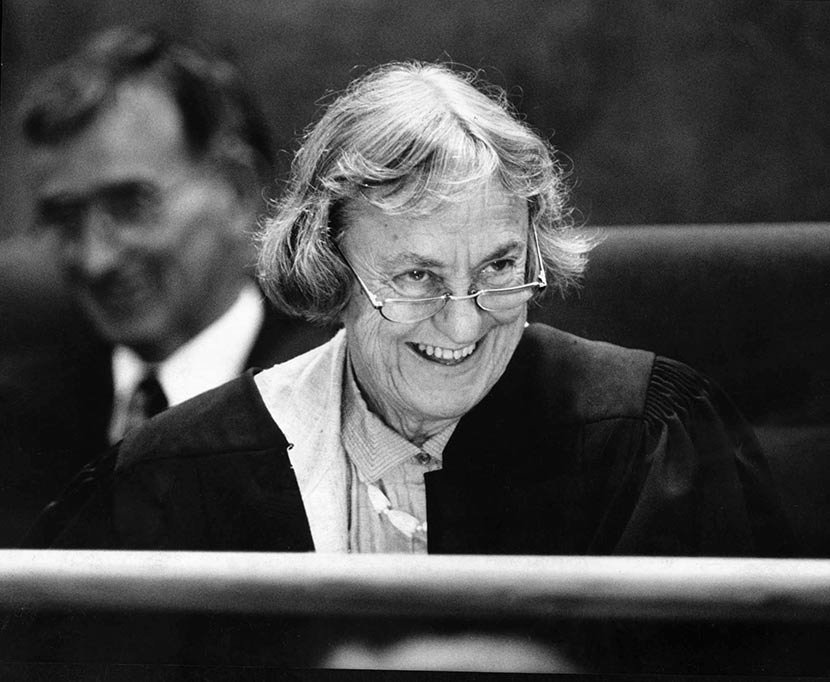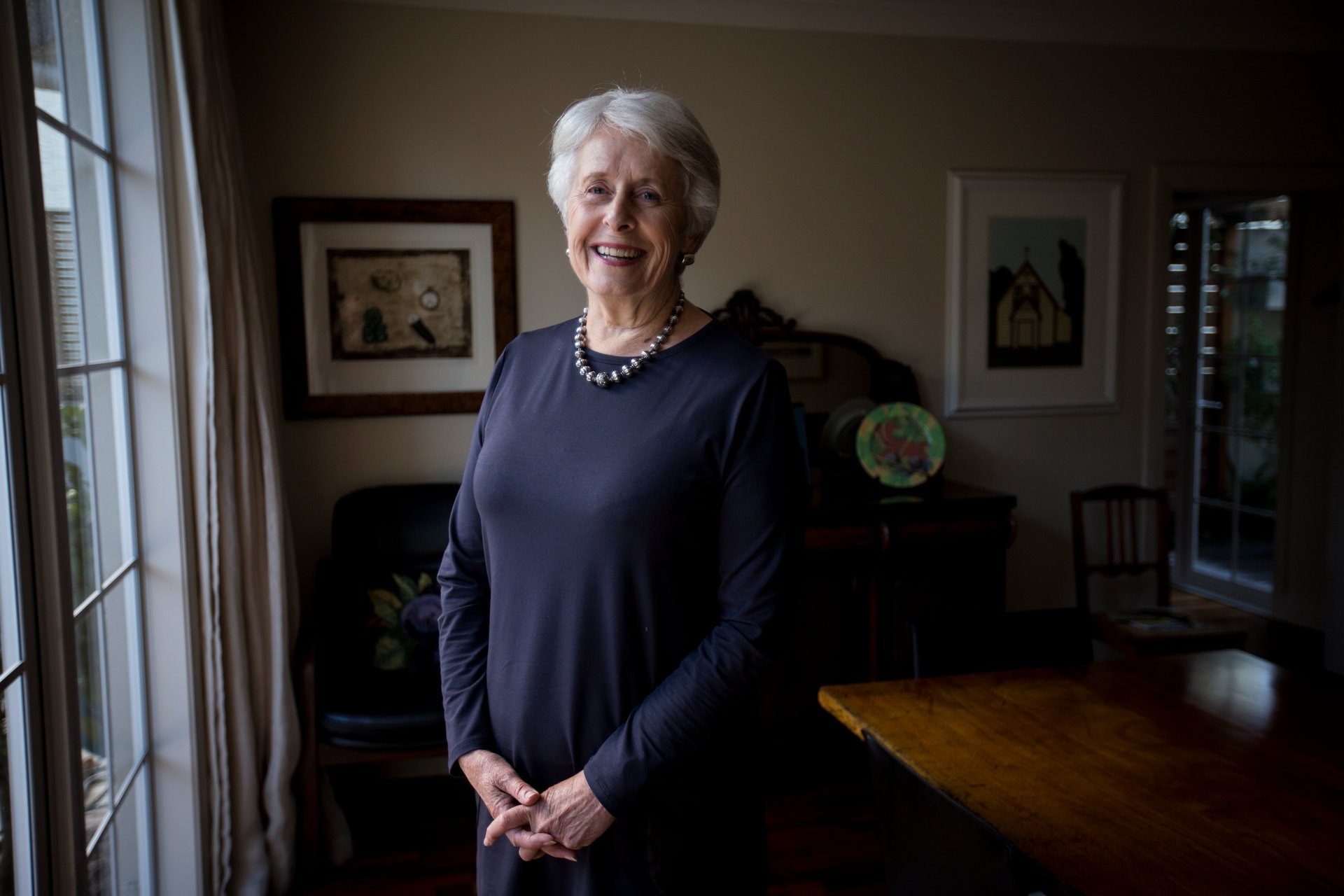On the Shoulders of Giants
Isaac Newton used this phrase to describe his success as based on the ideas and work of others before him. I am immensely grateful to the courageous, persistent, pioneering women who entered the legal profession before me. These women helped to make my own career path available to me and much easier for the steps they had already taken.
Ethel Benjamin was the first woman in Australasia to be admitted to Law School. She went to Otago Law School in 1893, the year New Zealand women gained the right to vote in parliamentary elections but could not yet be admitted to the practice of law. She was the only female out of about 14 students. Many of Ethel’s subjects were self-taught, especially in the later years of her degree, because the Law School had very few lecturers.
Ethel Benjamin
A law change in late 1896 permitted women to practice law. Ethel graduated and became New Zealand’s first female lawyer in 1897. At the graduation ceremony, she gave the speech on behalf of the graduands. Her subject was the advancement of women in work:
Formerly women were compelled to marry that they might not have lived in vain … But now women’s lives are becoming fuller, freer. They have at last come forward and claimed their right to work, as and how they will.
Ethel was probably the first woman in the British Empire to appear in court as counsel, in September 1897. Most of Ethel’s work was as a solicitor. Ethel ran a successful legal practice in Dunedin for ten years. She represented many women in cases of wife abuse, marriage separation and divorce and adoption. Ethel represented hoteliers in important litigation against the prohibition movement. She was also a very capable businesswoman, having investments in hotels and property.
Although she records receiving support from male members of the profession, Ethel also faced instances of discrimination. She was granted limited access to the law library. She did not receive invitations to bar dinners. She had difficulty receiving referrals from her male colleagues. Ethel appears to have approached these difficulties in a very pragmatic way. She wrote to the Law Society pointing out she was an equal member of the profession and objecting if the lack of notification about the bar dinner was due to her gender. She wrote, in part, on behalf of “other members of [her] sex who will follow in [her] footsteps”.
Dame Augusta Wallace was New Zealand’s first female district court judge, appointed to the bench in 1975. Fortunately for the legal profession, Augusta Dunlop grew up believing that ‘being a woman was not a barrier to any undertaking’. Between 1948 and 1953, Augusta Dunlop was the only woman in her law class at Auckland University College. She always asserted that she was treated as an equal by other students and that she faced no problems as a woman in law.
Dame Augusta Wallace
After marrying a soldier and travelling with his career, she worked for an Ōtāhuhu law firm. Then Dame Augusta established her own Papatoetoe law practice in 1964. Her only child was born in 1957. She continued to work during her pregnancy and after her daughter was born, with support from family and a long-term housekeeper.
Dame Augusta served as a judge in the Auckland District Court for nearly 15 years and then took appointments on the Ōtāhuhu and Papakura district courts. It was in the Ōtāhuhu Court that she was seriously injured by a 16 year old with a machete. She returned to the bench refusing to retire “just because [she] had been hit on the head.” After retiring from the bench, she went on to contribute in various public service roles, including on the Waitangi Tribunal. Dame Augusta died in April 2008.
Dame Sylvia Cartwright was the first female appointed chief judge of the District Court, first female appointed to the High Court bench and the second woman to be Governor-General (in 2001), after Dame Catherine Tizard (appointed in 1990).
Dame Sylvia Cartwright
Dame Sylvia led the inquiry into unethical practices relating to the treatment of women with cervical cancer. This inquiry identified systemic failures in treating women and led to substantial reforms to improve patients’ welfare and rights. She served on multiple panels for the United Nations, including presiding over trials for war crimes committed under the Khmer Rouge regime.
Dame Sylvia has said she suffered discrimination but that it was so overt, so out there, that you knew what you were facing, for example “no we don’t hire women”! She says the barriers are more subtle today. She sometimes found it lonely and difficult being a woman lawyer. I was amazed to read that at times Dame Sylvia doubted her own ability. She said there were times when appointments were thrust upon her that she didn’t want to do because it felt too hard. But she would almost always end up doing it anyway.
Dame Sian Elias
Dame Sian Elias was New Zealand’s first female Chief Justice, appointed to the role in 1999. She was one of six women in her class of 200 at the Auckland Law School, in 1966. After graduating, she had difficulties getting a job. So, she went to Stanford University and did a post-graduate degree. On returning to New Zealand, she worked in a firm in Auckland and three years later, when she had children, went to the independent bar. In the late 1970s Dame Sian worked for the Grey Lynn Neighbourhood Law Office, now the Auckland Community Law Centre. I comment on this as the current chair of the Auckland Community Law Centre. Dame Sian also served as a Law Commissioner.
In 1988, Dame Sian and Dame Lowell Goddard became the first female QCs appointed in New Zealand. In 1995, she was appointed to the High Court bench and four years later became New Zealand’s 12th Chief Justice. When she retired Dame Sian was the third longest-serving Chief Justice. During her time in the role, the Supreme Court of New Zealand was established.
When I consider the remarkable work and achievements of these women, three things stand out to me.
1. With the exception of Ethel Benjamin, all of these women were in the roles described or appointed to them after I was admitted to the profession. So, either I am old (getting there I guess) or it is, in fact, only very recently that women have been appointed to senior positions in the profession. Ethel Benjamin might have begun practice in 1897 but it was 78 years later before a woman was appointed to the bench. This is, in part, explained by the fact that although Ethel Benjamin cleared the way for women to enter the profession, few did for many years. Fifty years after Ethel was the only female law student in the country, Dame Augusta was the only woman in her law class in Auckland. Although it is valid to criticize aspects about the profession now, looking behind at what ground has been made in gender equality in recent times is encouraging to me.
2. Having read Ethel Benjamin’s story, I was most struck by her matter of fact attitude. She clearly was very intelligent, competent, sensible and pragmatic. She practiced law in that manner on a daily basis and so was a trailblazer for women. Dame Sylvia Cartwright described herself as “an everyday safe pair of hands”. We can build great things by consistently doing smaller things every day. This is true of many areas of life such as parenting, building businesses and many careers. Sure, there are people who have had amazing one-off achievements but most of us build our legacies based on what we do on a daily basis.
3. We are all the giants of those who come behind us. We might consider ourselves a bit shorter or a bit taller but we are continuing to build the profession for the new lawyers entering it. Women are continuing the female presence in the profession; men are also continuing the male presence in the profession. For myself, that doesn’t create pressure to be the first to do anything or to be appointed to any particular role. There is a limited number of high profile positions but there are very many day-to-day tasks and roles. It does make me think about what sort of profession I want to help build for those after me and whether I am doing what I can to bring that about.
I extend a heartfelt thank you to the trailblazing women that preceded me in the legal profession.




